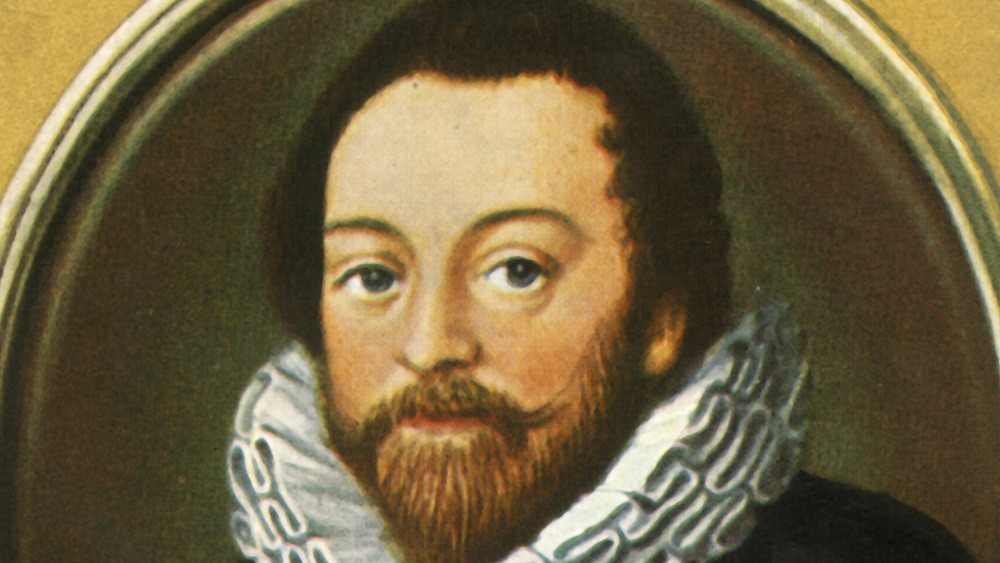The Truth About One Of The Biggest Hoaxes In California History
In 1936, California historian Herbert Eugene Bolton found a real treasure. Or at least he thought he had. And he really needed the win. According to the San Francisco Gate, he'd missed out on a multimillion-dollar treasure a decade and a half earlier when he'd disregarded a document that claimed to reveal buried Spanish gold in Mexico. "I'm too busy for a treasure hunt," he had said to the man who had brought the document to him and offered him half of whatever they would have found. That man did find gold. A whopping $36 million-worth of it.
So when Beyrle Shinn brought him an old piece of brass bearing writing old enough for the U's to be V's that he'd found while wandering around the San Francisco Bay area one afternoon, Bolton was ecstatic. He was convinced that Shinn had come across what historians referred to as Drake's plate, a legendary piece of brass said to be inscribed by English explorer Sir Francis Drake (pictured above) when he arrived in the area in 1579, by which he claimed the territory to be under the rule of Queen Elizabeth I. The discovery of the plate rewrote California history and promised to be the crowning achievement of Bolton's career. Unfortunately for his legacy, however, things aren't always what they seem.
Drake's plate was found to be a California history hoax that went way too far
Bolton went to his grave in 1953 believing that he'd found proof that Drake had actually been the first non-Native American to "discover" San Francisco Bay, and not Spanish explorer Gaspar de Portolá, as historians believed. "If the Drake plate is bogus, the hoax was perpetrated by someone who had not only studied the history of his voyages minutely but who also had knowledge of ship fittings of the 16th century," Bolton told a local newspaper.
As it turned out, he was correct, but not in the way that he thought he was. Chemists and metal experts found in 1977 — the 400th anniversary of Drake's California expedition — that the plate was not from the 16th century. It wasn't until 2003, however, that the full story came out. The fake historical artifact had actually been made by friends of Bolton's in the E Clampus Vitus historical fraternity, people who had the kind of knowledge he said was necessary to pull off the ruse. They thought it would be fun to play a joke on the poor guy, since he was so amped on finding the famed plate. They knew he would be excited, but they never expected it to go as far as it did. He went public way too soon, and the situation quickly got out of hand, so the upstanding historians just let the world believe a complete hoax for 70 years.

